- Home
- Rabindranath Tagore
Gora Page 2
Gora Read online
Page 2
The altruistic impulse behind this attempt to reclaim history illustrates what Dipesh Chakrabarty describes as the emergence of a modern and collective Bengali subject marked by the will to witness and document oppression and injury, capable of a compassion that is as much the product of reason (a western ideal) as of the Bengali ‘hriday’ or qualities of the heart (Chakrabarty 51). The gender divide provides another significant instance of social discrimination addressed in Gora. Early in the novel, Binoy criticizes Gora’s version of nationalism for its exclusion of women:
‘I think there is a serious lack in our patriotism. We see only half of Bharatvarsha.’
‘Why do you say that?’
‘We see Bharatvarsha only as a land of men; we don’t notice women at all.’ (p. 110)
When Gora protests, Binoy insists: ‘You know the nation as a place without women. Such knowledge can never be true.’ By the end of the narrative, Gora learns to accept Binoy’s point of view. Through Binoy’s victory over Gora in this debate, the text underscores the need to rethink women’s place in the discourse of the nation. Elsewhere, Tagore expresses the same idea: ‘Especially since women have no place in our outer society, our social life itself is seriously incomplete’ (Chatterjee 38). In Gora, despite the presence of the strong male protagonist in his self-fashioned role of the revolutionary, it is the women who emerge as the true figures of revolution. Sucharita and Lalita challenge the conservative Hindu idea that a woman’s place is in the home. Both Anandamoyi and Lalita make private choices with public consequences, which they are strong enough to face (Malini Bhattacharya 133). In boarding the steamer with Binoy, Lalita simultaneously defies orthodoxy and colonialism, flouting the Hindu-Brahmo divide while also refusing to take part in the performance at the British official’s house. Anandamoyi, Sucharita and Lalita serve as signposts in Gora’s journey to self-discovery and enlightenment. For Gora’s humanization also involves an element of feminization, a softening of the aggressive, dominating stance he assumes in challenging the colonial stereotype of the effete, servile Bengali babu (Mukherjee xviii).
Nationalism and the liberal/conservative debate provide the contextual frames for the exploration of female autonomy in Gora. The ritual practices of nationalism created a mingling of male and female spaces, enabling a reordering of gender relations (Tanika Sarkar 263-4). The text demonstrates the controversies that surrounded the changing perception of marriage in Bengali society in the late nineteenth century, and reflects Tagore’s ambivalence about the idea of companionate marriage. According to Sutapa Bhattacharyya, Gora reveals these inner tensions, for the text sometimes seems to endorse the traditional idea that a woman’s place is in the home, while at other moments it seems to make a strong case for female choice, autonomy, and the importance of love and compatibility in marriage (Bhattacharyya 46). At one point, Sucharita accepts Gora’s decree that domesticity is a woman’s dharma irrespective of conjugal bliss, although it is Harimohini who forces Gora to write these words in a letter: ‘Marriage is a woman’s path to religious pursuits, domesticity her main dharma … Whether the home is a happy one or not, to welcome that home, to remain virtuous, devoted and pure, to preserve the image of dharma within the house—that is the holy pledge of womanhood’ (495). Yet Gora’s entire spirit rebels against the idea of Sucharita being married off to a man like Kailash, suggesting that compatibility and marital happiness are important foundations for marriage.
A similar double perspective underlies the representation of motherhood in Gora. Unlike Bankimchandra Chatterjee, Tagore was critical of the tendency to deify woman as motherland. Instead of the rhetoric of deification, which apparently idealized the woman while actually marginalizing her, he sought, in novels like Gora and Ghare Baire, to inscribe women centrally in the narrative of the nation (Mukherjee xviii). Anandamoyi for instance expresses Tagore’s disagreement with Hindu orthodoxy, for Tagore’s representation of motherhood eschewed the Hindu revivalist tones of the mother goddess. (Bagchi WS-70). Women’s special place in Indic civilization, according to Ashis Nandy, is to be located in maternity, rather than conjugality. ‘Of the women who resist the contesting ideologies of conventionality, collaboration and defensive neo-conservatism, it is Anandamoyi whose resistance is the deepest and most ‘natural’… In Tagore’s world motherliness questions the dominant consciousness and resists it more radically and effectively than does conjugality’ (Nandy 41). This notion of a ‘naturally’ radical mother-figure is questioned by Sumit Sarkar, who reminds us that the widow Harimohini, once a victim of domestic oppression, begins to reproduce the patterns of that oppression by trying to dominate Sucharita as soon as she assumes charge of a household of her own. Baradasundari is another maternal figure without any radical overtones. Though she belongs to the progressive Brahmo sect, she adopts the outer forms of Brahmolism without comprehending its spirit, presenting an inverted mirror-image of orthodox conformity. Both Harimohini and Baradasundari reproduce the conservative ideas that they have internalized, and the rhetoric of the text presents their limited perspectives in a negative light. For Sarkar, this illustrates Tagore’s ‘emphasis on the need of women’s self-development for genuine women’s freedom, and the insufficiency of even the best-intentioned male reformist benevolence’ (Sumit Sarkar 2003, 166).
Such is the self-development that Sucharita and Lalita seek. ‘I don’t understand why I must bear everything in silence just because I’m born a woman,’ Lalita protests. ‘Even women are capable of distinguishing between just and unjust, possible and impossible’ (203). But the text also makes it apparent that any freedom these women achieve is extremely constricted. There is no public space where their resistance might be articulated in the shape of a counter-discourse; the only space available to them is outside the community: they must join the marginalized (Malini Bhattacharya 133). The interrogation of gender roles in Gora thus raises questions that are not fully resolved within the text.
This is largely true of all the broad social issues raised so powerfully in the novel. While transformation is possible for Gora as an individual, the world he inhabits remains unchanged, and the divisive forces continue to be at work. Those who regard Gora as a thesis novel, one that sets out a problem and then proceeds to solve it, have surely missed the point. For the novel’s immense rhetorical power lies in its cogent articulation of questions, uncertainties and contradictions, rather than in any attempt to provide facile solutions to prevailing social problems. Buddhadev Basu insists that despite its concern with ideological conflicts, Gora is not a novel that articulates a problem and then sets about solving it. The characters, he says, are not pawns in an intellectual chess game, but flesh and blood figures, for Tagore wrote Gora not to preach an idea but to create a work of art that also becomes a vehicle for the history of its times (Basu 66). Amartya Sen appreciates this ‘celebration of the unresolved and the incomplete’ as one of the strengths of Tagore’s writings (xx). In the ‘domain of unfinished accounts’, he says, ‘Rabindranath saw not a defeat but a humble—and also beautiful—recognition of our limited understanding of a vast world, even an incomprehensibly large, possibly infinite, universe’ (ix).
It is this visionary dimension, gesturing at future goals beyond the narrative time-frame, that accounts perhaps for the continued appeal of Gora. The novel gestures not towards a ‘hybridity’ that hovers in-between two worlds, but a ‘syncretism’, a community of interests among the oppressed, to overcome discriminatory practices (Malini Bhattacharya 131). This is the significance of the indigenous syncretism of the baul whose song occurs like a refrain in the first few pages of the novel. In the end, Gora finds his natural place with outsiders, a modernity outside the contours of revivalist nationalism (Malini Bhattacharya 129). Sumit Sarkar cites the final pages of Gora to highlight Tagore’s ‘vision of an India united on a modern basis transcending all barriers of caste, religion and race’ (85). Humayun Kabir argues, in his essay ‘Tagore was No Obscurantist,’ that it was Tagore who firs
t promoted non-alignment and federalism, based on a recognition of multiplicity and difference: ‘… if God had so wished, he would have made all Indians speak with one language … the unity of India has been and shall always be a unity in diversity’ (Kabir 122-5). ‘If there is an ideal in the novel,’ says Shirshendu Chakravarti, ‘it is perhaps to be found in the infinite capacity of average humanity for tolerant, caring and transforming love across barriers and divisions, for a continuous giving away of oneself in defiance of the emerging ideology of possessive individualism’ (70). Gora’s Irishness is significant here, for it marks Tagore’s move away from a narrow neo-Hindu patriotism towards a broader, more inclusive perspective. In the novel’s quest for a non-sectarian, tolerant humanism lies a clue to its relevance in our present day world.
When Gora was published, it was favourably received by most readers, including Tagore’s stringent critics, such as Dwijendralal Roy.3 It has since been canonized as the quintessential postcolonial novel, widely read and taught at universities. In 1938, it was made into a feature film by Naresh Mitra, with music by Kazi Nazrul Islam. Western readers, however, often found Gora a difficult text, because its setting and subject matter struck them as alien and unfamiliar. Tagore was aware of the problem. He had apparently tried without success to persuade Edward Thompson to translate the novel, and years later, urged him to revise the text for a western readership (Trivedi 117).
The first English translation of Gora was published in 1924. The title page of this book does not bear the name of any translator. On the following page is a note saying: ‘My thanks are due to Mr. Surendranath Tagore, who very kindly made the final corrections and revisions for this translation. Any merits it possesses are due to his painstaking efforts to rectify my mistakes—TRANSLATOR.’ The translator was actually W.W Pearson, who took many liberties with the original. In a letter to Thomas Sturge Moore dated 20 May 1924, Tagore expressed his dissatisfaction with this translation: ‘If you could read the Bengali book you would at once know how extremely unsatisfactory the translation is’ (Dutta and Robinson 2005, 311). He explains: ‘Pearson did not know enough Bengali to be able to give a correct rendering of the story in English. My nephew Suren revised it comparing it with the original. Macmillan in their haste only had half of the corrected version and the latter half remains untouched with its ludicrous mistakes and crudities’ (Dutta and Robinson 2005, 311).
Tagore’s anxieties were not unfounded, for when the 1924 translation first appeared, most readers in the west dismissed the novel as dull and tedious. Leonard Woolf was enthused by the novel though: ‘The subject of Gora is intensely interesting to me, and Mr. Tagore’s handling of it kept me absorbed throughout the book. His thesis is the social, political, and psychological problems which confront the educated Bengali in Calcutta today’ (Woolf 669). Woolf read Gora as a thesis novel, but was mistaken in assuming that the action of the novel is contemporaneous with the time of its publication.
Sceptical about how his western readers might respond to the localized, Bengali elements in his writings, Tagore had urged Pearson to abridge his translation before it was published. In 1922, he wrote: ‘I find that English readers have very little patience for scenes and sentiments which are foreign to them; they feel a sort of grievance for what they do not understand—and they care not to understand whatever is different from their familiar world … This makes me think that after you have done with your translation it will have to be carefully abridged.’4
Pearson did not accept Tagore’s suggestion, but in 1964, Macmillan published an abridged edition, translated by E.F. Dodd. Although this edition went through numerous reprints and was widely circulated as a textbook, the Macmillan translation left much to be desired, as it was an incomplete version, stilted in style, and full of errors and inconsistencies.
In 1997 came Sujit Mukherjee’s translation, published by the Sahitya Akademi. The first academic translation of Gora, and a major improvement on its predecessors, this book proved a valuable resource for scholars. Not all readers were satisfied though with all aspects of Mukherjee’s painstaking effort. In his perceptive review of Mukherjee’s translation for instance, Shirshendu Chakrabarti finds the translation ‘flat, uninspired, occasionally pedantic’ (70). Though appreciative of Mukherjee’s attempt to translate a difficult Bengali text, he points out several discrepancies, distortions of meaning and omissions, as minor ‘blemishes’ that have the cumulative effect of diluting the quality of the original: ‘In general, the passionate intensity and polemical brilliance have been consistently blunted into a kind of academic blandness bordering on the insipid’ (71).
The present translation attempts to redress some of these lapses and omissions, seeking to offer a lucid, readable version of this massive, complex novel to twenty-first century readers who do not read Bengali. This is no easy task, for the language of Gora poses an immense challenge for the translator. Tagore’s elastic prose accommodates a wide range of registers, from the sharply colloquial to the abstractly intellectual, from the passionately polemical to the tenderly lyrical. It is difficult indeed to capture such versatility in the English translation, harder still to avoid the risk of opacity when negotiating the passages of dense rhetorical argument. Cultural nuances are often diluted or flattened out in translation. Where facile, literal translation can only produce bathos, it is imperative for the translator to devise strategies for a less superficial, more sensitive rendering. In this translation, the word ‘Khristani’ for instance has been retained wherever the term carries pejorative, prejudicial overtones in the original; in all other instances, the more neutral term ‘Christian’ has been used. Bengali kinship terms, names of months, days and seasons, have also been retained. Some displacements of meaning are of course inevitable, for a translation is not just a linguistic but also a cultural transfer, and in a text such as Gora there are many elements that resist such a move. Yet it is through such displacements that the original remains alive, albeit in a new and transformed guise. For that is the nature of translation: in seeking to bridge linguistic and cultural divides, it also highlights the persistence of differences and the provisionality of meanings. In a very important way, Gora is about words and their power over us. Translating this major Tagore text has brought home to me the extraordinary ways in which that power may work.
New Delhi
September 2008
Radha Chakravarty
~1~
The clouds had cleared this Sravan morning, leaving the Kolkata sky filled with pure sunshine. On the streets, traffic moved ceaselessly; hawkers called their wares without pause; baskets of fish and vegetables had been delivered to the homes of those about to leave for office, college or courthouse; and smoke arose from their kitchens as stoves were lit. But still, the golden light streamed through the myriad streets and alleys of this vast, ruthless, workaday city of Kolkata, in a flood of exquisite youthfulness.
On such a morning, at an idle moment, Binoybhushan stood alone on his first-floor balcony, gazing at the movement of people in the street. Having completed his college education long ago, he had not yet entered the world of domesticity. He had immersed himself in organizational and journalistic activities, but they did not entirely satisfy his heart. This morning, at least, a lack of purpose made him restless. On the adjacent rooftop, some crows were cawing raucously over something, and in a corner of his balcony, a pair of nesting sparrows were chirping encouragement to each other. All these incoherent bird-sounds stirred up a vague emotion in Binoy’s heart.
Outside a nearby shop, a long-robed baul burst into song:
In and out the cage, how the unknown bird doth flit;
I’d chain it with my heart, if I could but capture it.
Binoy longed to send for the baul, to write down the lyrics about this unknown bird. But out of languor—just as we shiver at dawn yet lack the energy to reach for the coverlet—the baul was not summoned, and the lyrics remained uninscribed. Only the melody of that unknown bird continued to
hum within his heart.
Just then, directly in front of his house, an enormous coach-and-pair rammed into a hackney carriage, smashing one of its wheels, then speeding away heedlessly. The hackney did not overturn, but tilted crookedly. Rushing out into the street Binoy found that a girl of about seventeen or eighteen had descended from the carriage. Within was an elderly-looking gentleman, preparing to alight. Binoy helped him down.

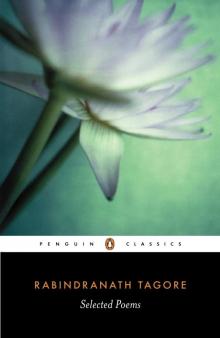 Selected Poems
Selected Poems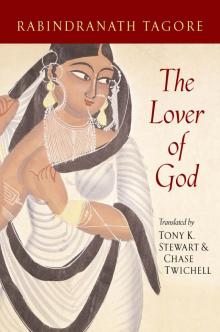 The Lover of God
The Lover of God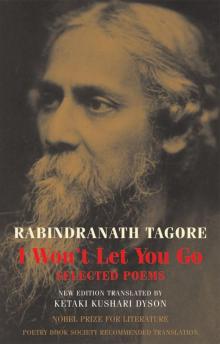 I Won't Let You Go: Selected Poems
I Won't Let You Go: Selected Poems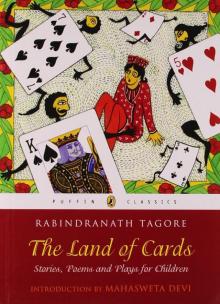 The Land of Cards: Stories, Poems, and Plays for Children
The Land of Cards: Stories, Poems, and Plays for Children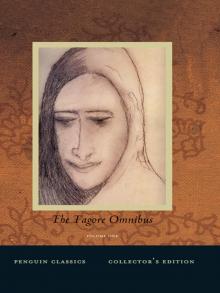 The Tagore Omnibus, Volume One
The Tagore Omnibus, Volume One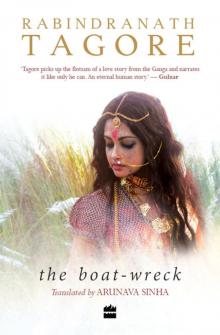 The Boat-wreck
The Boat-wreck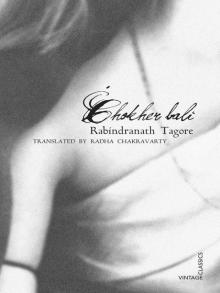 Chokher Bali
Chokher Bali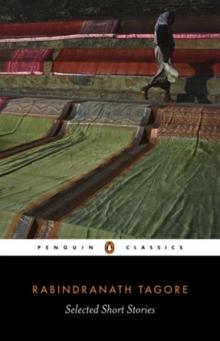 Selected Short Stories
Selected Short Stories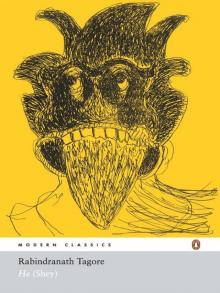 He (Shey)
He (Shey)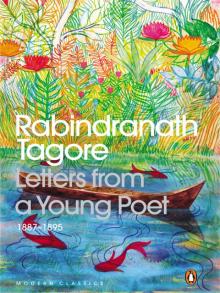 Letters From a Young Poet 1887 1895
Letters From a Young Poet 1887 1895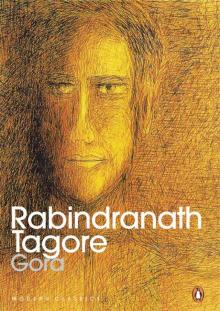 Gora
Gora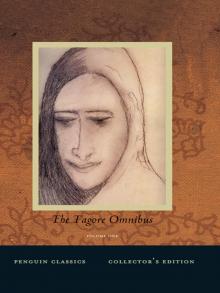 Tagore Omnibus, Volume 1
Tagore Omnibus, Volume 1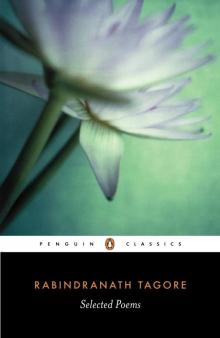 Selected Poems (Tagore, Rabindranath)
Selected Poems (Tagore, Rabindranath)